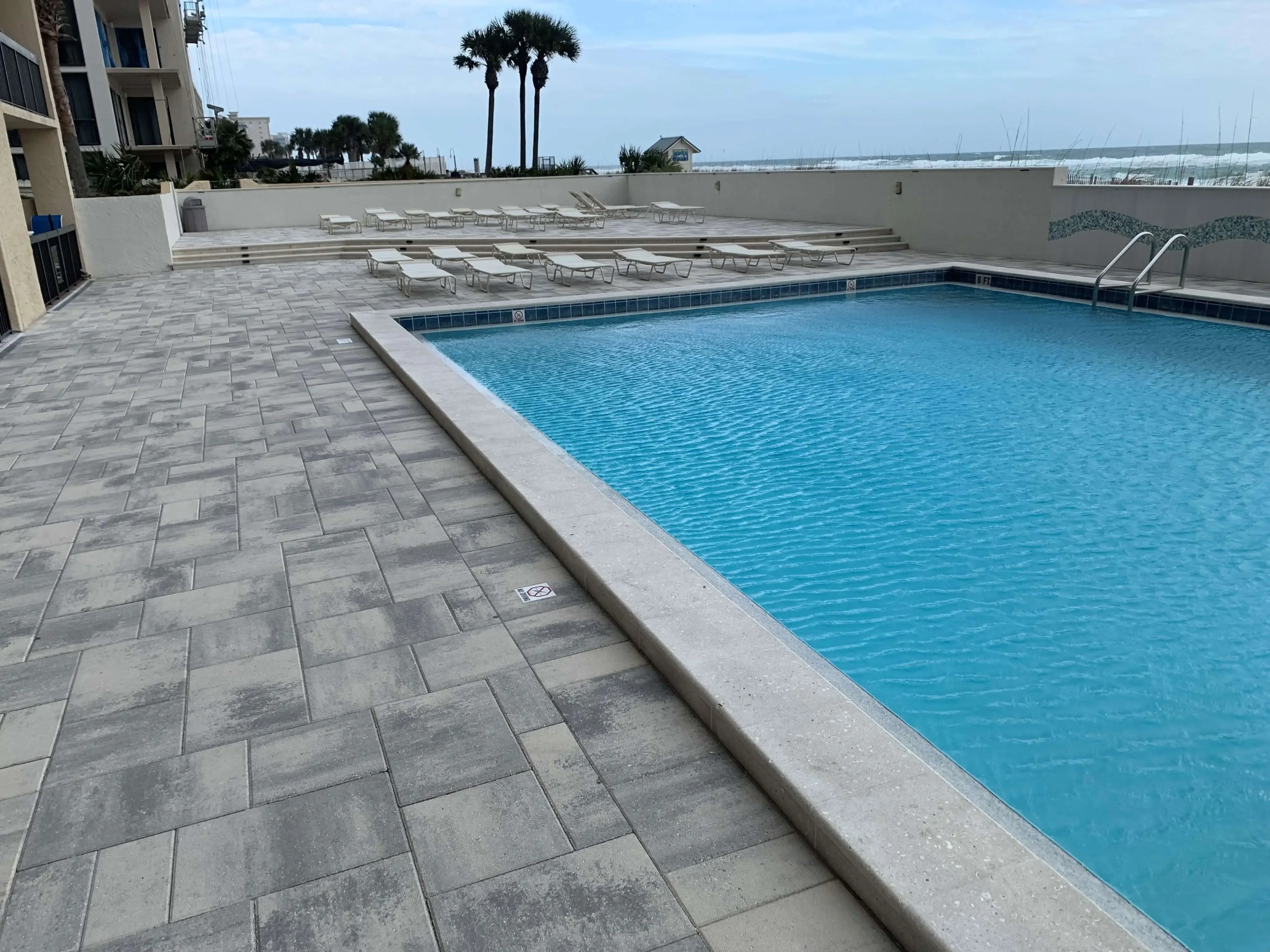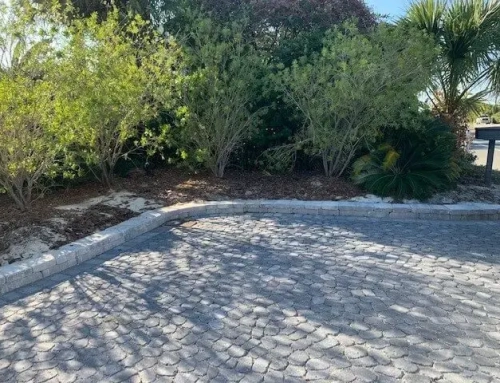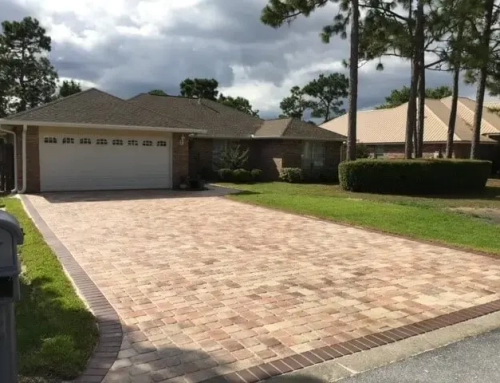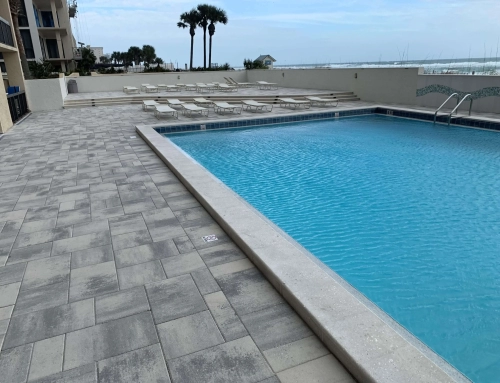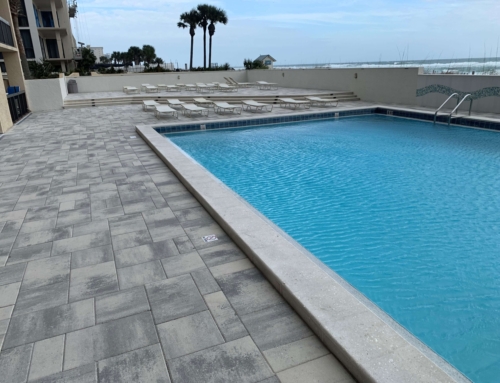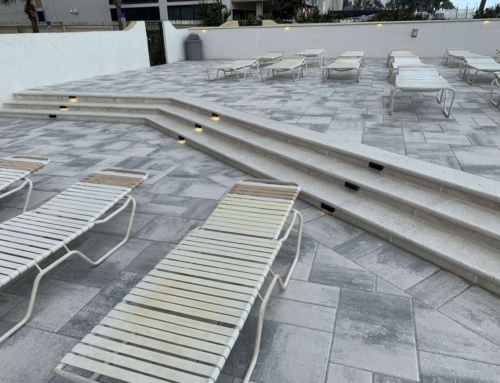When designing and maintaining a paver pool deck and spa area, safety should be a top priority. Here are some essential safety considerations to keep in mind:
Slip Resistance
One of the most critical safety features for any pool deck is slip resistance. Wet surfaces can be hazardous, especially around a pool, where people are likely to be walking barefoot.
- Choosing Slip-Resistant Pavers:
- Select pavers that naturally offer a textured surface to provide better traction when wet. Materials like travertine or textured concrete pavers are excellent choices for slip resistance.
- Avoid using smooth or polished pavers around the pool area, as these can become slippery when wet.
- Adding Anti-Slip Treatments:
- If you have already installed pavers that are not sufficiently slip-resistant, consider applying an anti-slip treatment. These treatments are usually clear coatings that add texture to the surface without altering the appearance of the pavers.
- Regularly inspect and reapply the treatment as needed, especially in high-traffic areas.
Heat Resistance
In hot climates, the surface temperature of your pool deck can become uncomfortable, or even unsafe, for bare feet. Choosing the right paver material can help mitigate this issue.
- Choosing Heat-Resistant Pavers:
- Light-colored pavers, such as those made from light gray, beige, or white concrete, tend to reflect more sunlight and stay cooler than darker materials.
- Natural stone pavers, such as travertine, are also known for their ability to remain cooler underfoot, even in direct sunlight.
- Incorporating Shade:
- Consider incorporating shaded areas into your pool deck design to provide relief from the sun. Options include pergolas, umbrellas, or strategically placed trees and plants.
- Providing shade not only keeps the surface cooler but also enhances the comfort and usability of the space.
Drainage Solutions
Proper drainage is essential to maintaining both the safety and longevity of your paver pool deck and spa area. Standing water can create slippery surfaces and lead to paver shifting or erosion.
- Ensuring Proper Drainage:
- When designing the pool deck, ensure that the surface slopes slightly away from the pool to direct water toward designated drainage areas. A slope of about 1/4 inch per foot is typically recommended.
- Incorporate drainage channels, grates, or French drains into the design to manage water flow effectively. These features help prevent water from pooling on the surface and reduce the risk of slips.
- Using Permeable Pavers:
- Consider using permeable pavers in areas prone to water accumulation. Permeable pavers allow water to seep through the surface and into the ground, reducing the amount of standing water on the deck.
- This option is particularly beneficial in regions with heavy rainfall or in areas where you want to reduce runoff and promote groundwater recharge.
Edge Treatments and Fencing
Safety around the edges of the pool deck and spa area is crucial, especially for families with children or pets.
- Secure Edging:
- Ensure that all edge pavers, especially those around the pool (known as coping), are securely installed and level. Loose or uneven edge pavers can be tripping hazards.
- Consider adding a rounded or bullnose edge to the coping pavers to provide a smoother, safer transition between the pool and deck.
- Fencing and Barriers:
- Depending on local regulations, you may be required to install a fence or barrier around the pool area. This is especially important for preventing accidental falls into the pool, particularly for children and pets.
- Choose a fence design that complements the aesthetics of your pool deck while meeting safety standards. Glass panels, wrought iron, or aluminum are popular options that provide safety without obstructing the view.

